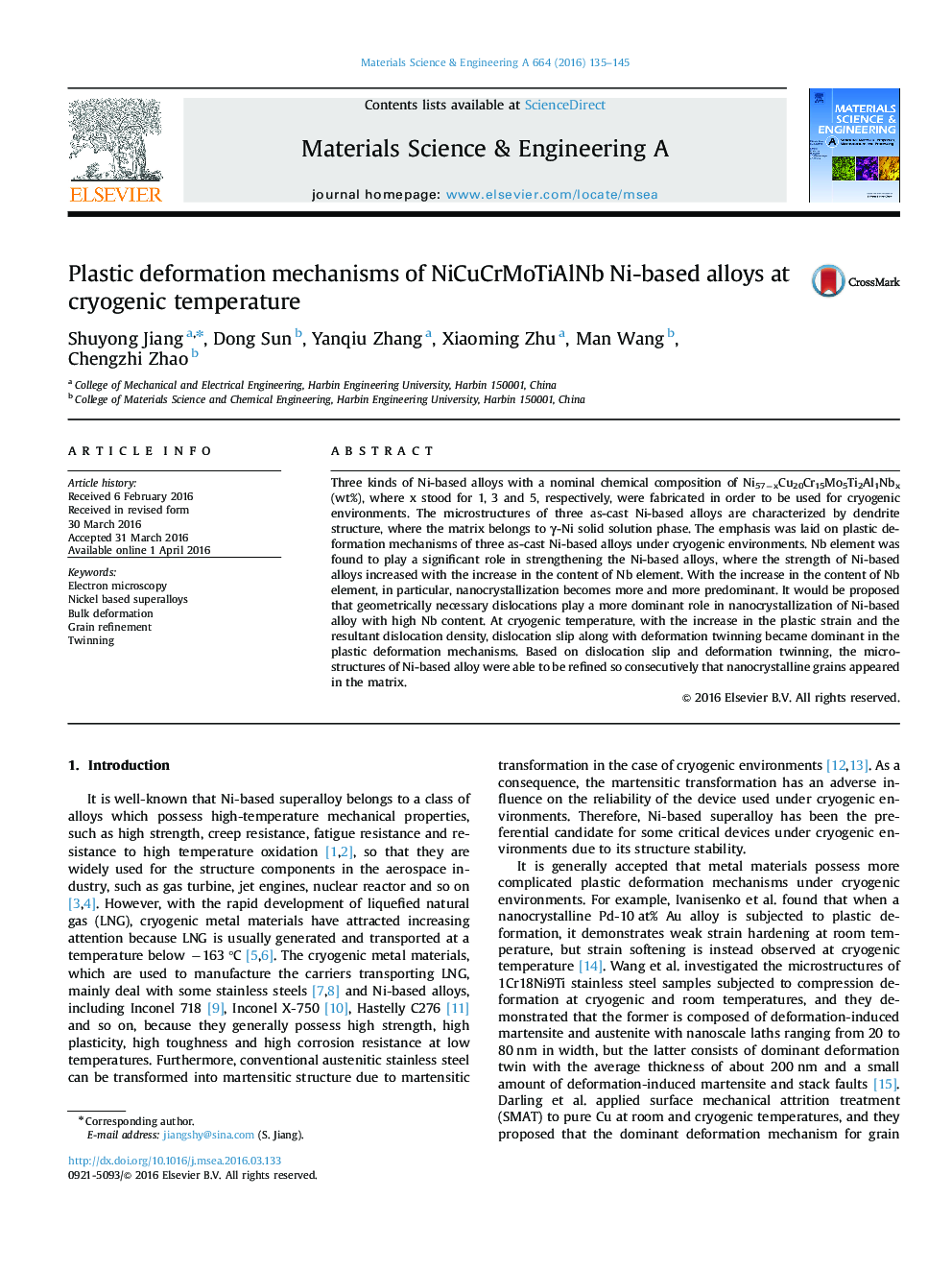| Article ID | Journal | Published Year | Pages | File Type |
|---|---|---|---|---|
| 1573412 | Materials Science and Engineering: A | 2016 | 11 Pages |
Abstract
Three kinds of Ni-based alloys with a nominal chemical composition of Ni57âxCu20Cr15Mo5Ti2Al1Nbx (wt%), where x stood for 1, 3 and 5, respectively, were fabricated in order to be used for cryogenic environments. The microstructures of three as-cast Ni-based alloys are characterized by dendrite structure, where the matrix belongs to γ-Ni solid solution phase. The emphasis was laid on plastic deformation mechanisms of three as-cast Ni-based alloys under cryogenic environments. Nb element was found to play a significant role in strengthening the Ni-based alloys, where the strength of Ni-based alloys increased with the increase in the content of Nb element. With the increase in the content of Nb element, in particular, nanocrystallization becomes more and more predominant. It would be proposed that geometrically necessary dislocations play a more dominant role in nanocrystallization of Ni-based alloy with high Nb content. At cryogenic temperature, with the increase in the plastic strain and the resultant dislocation density, dislocation slip along with deformation twinning became dominant in the plastic deformation mechanisms. Based on dislocation slip and deformation twinning, the microstructures of Ni-based alloy were able to be refined so consecutively that nanocrystalline grains appeared in the matrix.
Related Topics
Physical Sciences and Engineering
Materials Science
Materials Science (General)
Authors
Shuyong Jiang, Dong Sun, Yanqiu Zhang, Xiaoming Zhu, Man Wang, Chengzhi Zhao,
